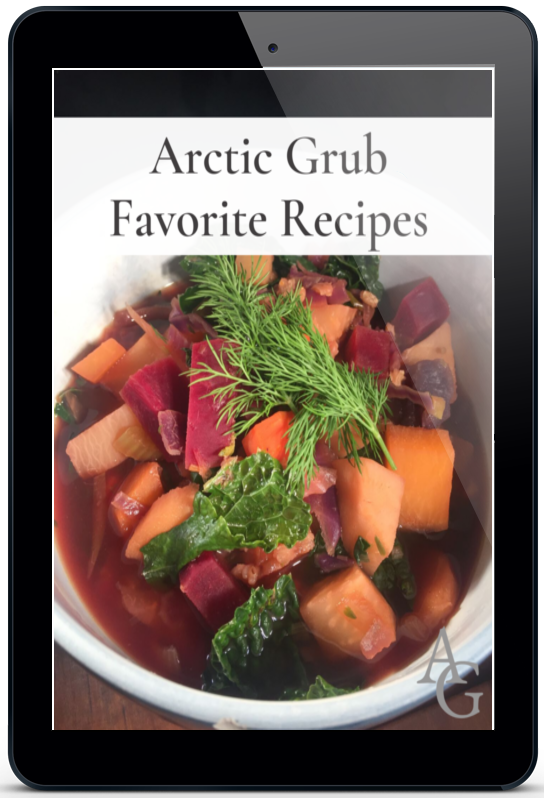The kringle is a familiar Scandinavian pastry here in the U.S. among those familiar with Nordic cuisine.
Often referred to as the Nordic pretzel because of its similarity in shape, it’s said to have arrived in the 13th century with the Roman Catholic monks.
Denmark is the country in Scandinavia best known for their kringler, and even I—a Norwegian—must admit they have a slight upper hand when it comes to creative varieties of this delicious knotted-shaped pastry.

One of the few ancient guild signs still used, the traditional golden kringle symbol is often found on bakery shop signs. It is said to symbolize hands folded in a cross-like pattern across the chest, mimicking the prayer position from the Middle Ages.
According to history, a 7th-century monk wanted to reward his students with small pieces of bread shaped in the same way the children held their arms during prayer. He named the baked good pretiolas meaning “a little reward.”
Quickly adopted across Europe, the kringle became a symbol of luck, and a long and prosperous life.
The kringle achieved particular fame in 1510 when Turkish troops attempted to enter Austria by digging their way underground through the wall into Vienna. Bakers, the only ones working at that time of night, heard the noise, and the attack was stopped as a result. As a reward, the bakers received their own seal, which included the kringle, and later became known as the bakers’ symbol.
The Norwegian word kringle is an old word, meaning ring or circle. In his introductory notes in his royal history saga stories, Snorre Sturlasson (an Icelandic poet and politician) described the creation of the world as “Kringla heimsins” (the world’s circle) in Norse. His sagas later became known as “Heimskringla.”
Who knew this pastry had such a long and interesting history?
Bergen is the place in Norway best known for their kringle. The tradition most likely came from German or Dutch salesmen who conducted business on the dock in the coastal city of Bryggen.
Perhaps this is where the connection to the German, salty pretzel comes in?

Regardless, kringler from Bergen became hugely popular all over the country. Fishermen from the north even transported kringler home in empty coffins!!
Both sweet and savory versions of kringler exist, filled with nuts, confectioners glaze, and pastry cream among many other delectable things.
Kringler in my area of Norway however, more often than not, are not filled, but rather plain. We refer to the pastry cream-filled version as wienerbrød.
For delectable and authentic recipes for both kringle and wienerbrød be sure to grab my on-demand cooking class Norway vs Denmark Part I Cinnamon Twists.
I should also quickly mention the correct pronunciation of kringle is “Kring-LUH” and not “Kring-EL,” which so many Americans say. (When I hear “Kring-EL’ I don’t always connect the dots about which pastry they’ are talking about 🙂)
Aniskringler is a cherished traditional pastry and one of the oldest kringle recipes showcasing the Scandinavian love for anise-flavored baked goods. Crushed anise seeds give these figure-eight-shaped pastries their distinctive taste and provide the delicate, aromatic licorice flavor characteristic of Nordic baking.
Although aniskringler emerged as a regional specialty, particularly in Norway’s western regions, they’re now beloved throughout the country. Traditionally made for special occasions and holidays, they often appear at Christmas alongside other Norwegian holiday cookies like krumkaker and sandkaker.

Many Norwegians remember their grandmothers serving these pastries to them as children, as mine did.
Today, I’m sharing my grandmother’s recipe with you—one my family has been baking for decades! Biting into one brings back so many memories and makes me feel a little closer to home.
I hope you’ll try them out!
Bestemors Aniskringler
Makes 24 kringler
Ingredients
2½ cups (6 dl) non-dairy milk (I like unsweetened organic soy milk)
1 packet (2¼ teaspoon) dry active yeast
¾ cup (150g) sugar
1 teaspoon salt
2 teaspoons anise seeds
5⅓ cups (about 800g) all-purpose flour
1½ sticks (180g) vegan butter, chilled and diced
Non-dairy milk for brushing the top of the kringler
Directions
Combine all the ingredients except the butter into the bowl of a stand mixer fitted with the dough hook and knead on medium-low for about 10 minutes.
Add the butter and knead for another 10 minutes until you have a smooth, shiny, and elastic dough.
Cover the bowl with a clean kitchen towel and let rise in a warm spot until the dough has doubled in size, about 1½ hours.
Prepare two baking sheets by lining with parchment paper or silpats.
Transfer the dough onto a lightly floured work surface and divide into 24 pieces.
Roll each piece into a rope about 15 inches long.

Form it into a loose figure-eight shape on your work surface. Cross one end over the other at the center point, then tuck both ends under the loops they’ve created. The final shape should look like two connected rings with a slight twist in the middle. Press the ends firmly into place to seal them.
Place the aniskringler on the prepared baking sheet, cover with a towel and let rise again for another 30 minutes.

While the pastries rise, preheat the oven to 450°F (225°C).
After rising, brush the tops of the aniskringler with a little non-dairy milk and sprinkle with a few extra anise seeds if desired.
Bake for 10-12 minutes or until golden on top.
Notes
Keep your hands slightly floured to prevent sticking.
Make sure the dough rope is even in thickness throughout.
Press the seams firmly to prevent them from opening during baking.
If the dough springs back while rolling, let it rest for 5 minutes and try again.
More Recipes To Try…


Bestemors Aniskringler
Ingredients
- 2½ cups (6 dl) non-dairy milk (I like unsweetened organic soy milk)
- 1 packet (2¼ teaspoon) dry active yeast
- ¾ cup (150g) sugar
- 1 teaspoon salt
- 2 teaspoons anise seeds
- 5⅓ cups (about 800g) all-purpose flour
- 1½ sticks (180g) vegan butter, chilled and diced
- Non-dairy milk for brushing the top of the kringler
Instructions
- Combine all the ingredients except the butter into the bowl of a stand mixer fitted with the dough hook and knead on medium-low for about 10 minutes.
- Add the butter and knead for another 10 minutes until you have a smooth, shiny, and elastic dough.
- Cover the bowl with a clean kitchen towel and let rise in a warm spot until the dough has doubled in size, about 1½ hours.
- Prepare two baking sheets by lining with parchment paper or silpats.
- Transfer the dough onto a lightly floured work surface and divide into 24 pieces.
- Roll each piece into a rope about 15-inches long. Form it into a loose figure-eight shape on your work surface. Cross one end over the other at the center point, then tuck both ends under the loops they’ve created. The final shape should look like two connected rings with a slight twist in the middle. Press the ends firmly into place to seal them.
- Place the aniskringler on the prepared baking sheet, cover with a towel and let rise again for another 30 minutes.
- While the pastries rise, preheat the oven to 450°F (225°C).
- After rising, brush the tops of the aniskringler with a little non-dairy milk and sprinkle with a few extra anise seeds if desired.
- Bake for 10-12 minutes or until golden on top.









In the Seattle area, Larsen’s Bakery, is well known for their Kringle. Theirs is made with almond paste and raisins. I can’t wait to try your recipe as it looks very easy and one I know that my family will love!!
Thanks, Karen, would love to hear how you like this aniskringle! 🙂
It made them too & loved them so much! I use light spelt flour in here too. , each 50/50
Nice! I love using spelt flour too… I’m experimenting with using a combination of flours different than regular AP flour (white) that will be similar in texture but higher in nutrients.. 🙂
Me too! xxx
My grandmothers recipe was lost for these. My mom remembered her boiling and then baking them. Any knowledge of a recipe like that? I remember them having a very slightly sweet taste and we’d butter them. More like bread then a pastry. They were even better the next day if there were any left! My grandmother came from Bergen too!
Hi Carol! Yes, the recipe you are referring to are “vannkringler”, and they are typical for your grandmother’s hometown of Bergen 🙂 The recipe I have for it is simple, using about a cup and a half or so of water, with a packet of dry yeast, then about 3/4 stick of butter (around 70 grams) melted and a lb of flour and 1/4 tsp of salt. Combine everything (make sure the water is heated up to about 120F before you add the packed of yeast) into a dough, shape the kringler, and then you submerge the kringler into boiling water (gradually – not all at once, lol!). They will sink first, but float to the top when they are ready. Take them out and place on a baking sheet – bake them at 450 degrees Fahrenheit for about 20 minutes. Hope that helps!! thanks for stopping by and Happy new year! 🙂
Oh wow!! You have no idea the searching we have done! Thank you so much for sharing this. I’m visiting in February and we are so going to make these! You’ve made my year already!!
Glad I could help, Carol!! Let me know if you have any other questions! Happy baking!:)
Hi Sunny! I think what people call Kringle here in Wisconsin are referring to more like a Danish as Racine Wisconsin is famous for them. I would like to try your recipe above, is there a substitute for anise, as my family is not wild for that flavor.
Thanks!
Hi Rose! Yes, I noticed that too when I first saw “kringle” here I went “this is not kringle?!?” Funny how recipes get muddled with generations/time 🙂 If you don’t like anise you can just eliminate it, it’s not necessary! Happy baking and glad to hear you want to try my recipe out, please let me know how it goes!
I have been looking for this recipe for years. I have many wonderful memories with my grandmother (from Norway) making these. I failed to get the recipe from her. I’m excited to try this again! Thank you!
Hi Deb, so glad you found it too, thanks for writing and happy baking!
I like Norsk breads
Glad to hear! 🙂